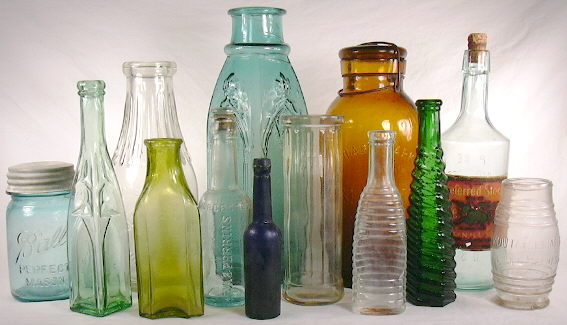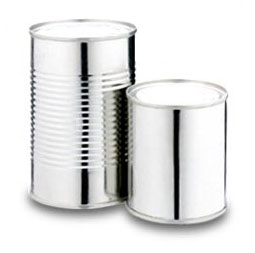by Dale Blumenthal
The steamboat Bertrand was heavily laden with provisions when it set out on the Missouri River in 1865, destined for the gold mining camps in Fort Benton, Mont. The boat snagged and swamped under the weight, sinking to the bottom of the river. It was found a century later, under 30 feet of silt a little north of Omaha, Neb. Among the canned food items retrieved from the Bertrand in 1968 were brandied peaches, oysters, plum tomatoes, honey, and mixed vegetables.
In 1974, chemists at the National Food Processors Association (NFPA) analyzed the products for bacterial contamination and nutrient value. Although the food had lost its fresh smell and appearance, the NFPA chemists detected no microbial growth and determined that the foods were as safe to eat as they had been when canned more than 100 years earlier. The nutrient values varied depending upon the product and nutrient. NFPA chemists Janet Dudek and Edgar Elkins report that significant amounts of vitamins C and A were lost. But protein levels remained high, and all calcium values “were comparable to today”s products.”
NFPA chemists also analyzed a 40-year-old can of corn found in the basement of a home in California. Again, the canning process had kept the corn safe from contaminants and from much nutrient loss. In addition, Dudek says, the kernels looked and smelled like recently canned corn.
The canning process is a product of the Napoleonic wars.
Malnutrition was rampant among the 18th century French armed forces. As Napoleon prepared for his Russian campaign, he searched for a new and better means of preserving food for his troops and offered a prize of 12,000 francs to anyone who could find one. Nicolas Appert, a Parisian candy maker, was awarded the prize in 1809.
Although the causes of food spoilage were unknown at the time, Appert was an astute experimenter and observer. For instance, after noting that storing wine in airtight bottles kept it from spoiling, he filled widemouth glass bottles with food, carefully corked them, and heated them in boiling water. The durable tin can–and the use of pottery and other metals–followed shortly afterwards, a notion of Englishman Peter Durand. Soon, these “tinned” foods were used to feed the British army and navy.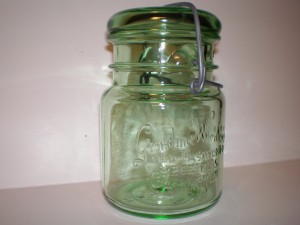
21 Billion Cans a Year Canned foods are more than a relic dug from the past.
They make up 12 percent of grocery sales in the United States. More than 1,500 food products are canned–including many that aren”t available fresh in most areas, such as elderberry, guava, mango, and about 75 different juice drinks. Consumers can buy at least 130 different canned vegetable products–from artichokes and asparagus to turnips and zucchini. More than a dozen kinds of beef are canned, including beef burgers and chopped, corned and barbecued beef. According to a recent study cosponsored by the U.S. Department of Agriculture and NFPA, canned foods provide the same nutritional value as fresh grocery produce and their frozen counterparts when prepared for the table.
NFPA researchers compared six vegetables in three forms: home-cooked fresh, warmed canned, and prepared frozen.
“Levels of 13 minerals, eight vitamins, and fiber in the foods were similar,” says Dudek. In fact, in some cases the canned product contained high levels of some vitamins that in fresh produce are destroyed by light or exposure to air. The Canning Process Food-spoiling bacteria, yeasts and molds are naturally present in foods. To grow, these microorganisms need moisture, a low-acid environment (acid prevents bacterial growth), nutrients, and an appropriate (usually room) temperature.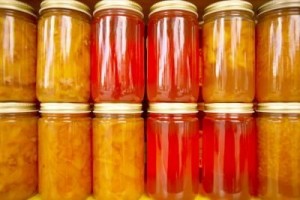
Dennis Dignan, Ph.D., chief of FDA”s food processing section, explains that foods are preserved from food spoilage by controlling one or more of the above factors. For instance, frozen foods are stored at temperatures too low for microorganisms (bacteria, yeasts and molds) to grow. When foods are dried, sufficient moisture is not available to promote growth. It is the preservation process that distinguishes canned from other packaged foods.
During canning, the food is placed in an airtight (hermetically sealed) container and heated to destroy microorganisms. The hermetic seal is essential to ensure that microorganisms do not contaminate the product after it is sterilized through heating, says Dignan. Properly canned foods can be stored un-refrigerated indefinitely without fear of their spoiling or becoming toxic.
Dignan also notes that foods packaged in materials other than metal cans are considered “canned” by food processing specialists if the food undergoes the canning preservation process. Thus, today a canned food may be packaged in a number of other types of containers, such as glass jars, paperboard cans, and plastics that can be formed into anything from pouches to soup bowls to serving trays. For example, FDA consumer safety officer Tom Gardine, holding up a small, plastic container of half-and-half for his morning coffee, says, “This is a canned food.” He explains that the coffee creamer was heated to destroy bacteria and sealed to prevent microorganisms from entering the sterile container. Until it is opened, the creamer is intended to be stored on the shelf, not in the refrigerator.
Meals for today”s U.S. military come in plastic pouches–a new version of the heavier C-rations in metal cans. Such flexible pouches aren”t as popular with American civilians as they are with Europeans.
Many Americans, instead, are buying their canned foods in plastic containers that come with a peel-off metal top and plastic lid–ready for the microwave. Barriers (made of sophisticated synthetic materials) that provide an airtight seal are sandwiched in these plastic layered containers. They are used for applesauce, pudding, and other foods that can be stored on supermarket or home shelves for years.
Then there are containers made of new transparent plastic materials like polyethylene terephthalate–used for peanut butter and catsup. Packages made of paperboard layers have been designed in the shape of boxes to contain such foods as fruit juices, tomato sauce, and even milk. Even the tin can is changing. For years, the three-piece can (made from a top, a bottom, and a body formed from a plate soldered into a cylinder) was the only can around. Now there are two-piece cans, which eliminate the side seam and one seamed end.
These cans are made by feeding metal into a press that forms the can body and one end into a single piece. In the traditional three-piece cans, a welded side seam has replaced the lead-soldered side seam in all but 3.7 percent of American cans, says NFPA official Roger Coleman. The welding process uses electrodes that apply pressure and electric current to overlapping edges at the side seam. These new seams eliminate concern about lead leaching into metal canned foods.
In the 3.7 percent of U.S. cans where lead still is used, it is often for dry foods (such as coffee) packaged in cans, according to Coleman. Leaching is not a concern here. Many imported cans, however, still bear lead-soldered side seams. To tell whether a can has been soldered with lead, first peel back the label to expose the seam. The edges along the joint of a lead-soldered seam will be folded over. Silver-gray metal will be smeared on the outside of the seam. A welded seam is flat, with a thin, dark, sharply defined line along the joint. Turning Up the Heat Foods with a naturally high acid content–such as tomatoes, citrus juices, pears, and other fruits–will not support the growth of food poisoning bacteria.
In tests, when large numbers of food poisoning bacteria are added to these foods, the bacteria die within a day. (The exact amount of time depends upon the bacteria and amount of acidity.) Foods that have a high acid content, therefore, do not receive as extreme a heat treatment as low-acid foods. They are heated sufficiently to destroy bacteria, yeasts and molds that could cause food to spoil. Canners and food safety regulators are most concerned about foods with low acid content, such as mushrooms, green beans, corn, and meats. The deadly Clostridium botulinum bacterium, which causes botulism poisoning, produces a toxin in these foods that is highly heat-resistant.
The sterilization process that destroys this bacteria also kills other bacteria that may poison or spoil food. Low-acid canned foods receive a high dose of heat–usually 107 degrees Celsius (250 degrees Farenheit) for at least three minutes. (The amount of time the food is heated, though, depends upon the size of the container and the product.) The canned food is heated in a retort, a kind of pressure cooker. The coffee creamer on Gardine”s desk, however, was packaged differently.
Although both the half-and-half and plastic container were sterilized with heat, they were heated separately and then brought together in a sterile environment where the container was filled and sealed. The advantage of this “aseptic processing,” a type of canning, is that higher temperatures with reduced heating times prevent deterioration in the quality of the food. Aseptic processing is the “wave of the present and the future,” says Gardine. It is now used for liquids, and scientists are on the way to perfecting the method for canning stews and chowders.
However, says Gardine, because solid foods may be more difficult to keep sterile during the filling and sealing period, FDA is being especially cautious in approving uses for aseptic processing. Finessing the Attack on Food Spoilers Another critical element in the canned food process is sealing products in air-tight containers. It is essential that air be removed from the container before sealing. Air could cause the can to expand during heating, perhaps damaging the seals or seams of the container. A telltale sign of loss of this vacuum–and a possibly contaminated product–is a can with bulging ends.
If a seal is not airtight, bacteria may enter the can, multiply, and contaminate the product. The hermetic seal finesses the canning process. The bacteria in a food and container are killed through heating, and at the same time new bacteria are kept from contaminating the food. The distinction between the canning process and food handling before processing is an important one for food processors and regulators.
Last February, 22 students at Mississippi State University became ill after eating omelets made with canned mushrooms imported from China. Similar outbreaks followed in New York and Pennsylvania, affecting more than 100 people. FDA identified the culprit as staphylococcal enterotoxin, a poison produced by the bacteria Staphylococcus aureus. FDA”s investigation suggests that poor sanitation caused the problem, and that the mushrooms were contaminated with staphylococcal enterotoxin even before they were canned. The canning process did not destroy the substance because food preservation processes are not normally designed to destroy staphylococcal enterotoxin, a highly heat-resistant toxin. Since this incident, FDA and the Peoples Republic of China have been working together to determine the source of the contamination. However, FDA authorities still are preventing mushrooms canned in China from entering the United States.
And, says Gardine, FDA is focusing attention on sanitation procedures in imported foods. Surpassing Napoleon The canned food principle that won Nicolas Appert his prize of 12,000 francs has endured over the years. What might surprise Appert, however, is how his discovery is making food shopping and storing easier for the 20th century consumer.
Those who order coffee at fast food restaurants now also are served canned half-and-half, which has been transported and stored without concern about refrigeration. Hikers can take flexible pouches of canned food on backpacking trips without having to worry about saving water to reconstitute freeze-dried meals. And, in this society of microwave owners, Americans who don”t have time to prepare a well-balanced meal can pick up a plastic container filled with a canned, nutritious dinner. Dale Blumenthal is a staff writer for FDA Consumer.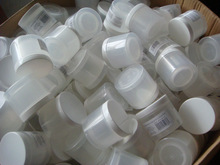
How to Recognize Can Defects
“Never eat food from a tin can with bulging ends” was a maxim many grew up with. Bulging was one of several clues that might indicate contamination of food packaged in metal cans. Guidelines have been adapted for recognizing defects in cans made of plastic and other materials, as well.
The guidelines are:
Metal Cans * an obvious opening underneath the double seam on the top or bottom of the can * a can with bulging ends * a fracture in the double seam * a pinhole or puncture in the body of the can * an unwelded portion of the side seam * a leak from anywhere in the can
Plastic Cans * any opening or non-bonding in the seal * a break in the plastic * a fractured lid * a swollen package Paperboard Cans * a patch in the seal where bonding or adhesive is missing * a slash or slice in the package * a leak in a corner of the package * a swollen package
Glass Jars * a pop-top that does not pop when opened (indicating loss of the vacuum) * a damaged seal * a crack in the glass of the jar
Flexible Pouches * a break in the adhesive across the width of the seal * a slash or break in the package * a leak at a manufactured notch used for easy opening * a swollen package
(Taken from a chart for retailers developed by FDA and NFPA and published by the Association of Official Analytical Chemists.) –D.B.

